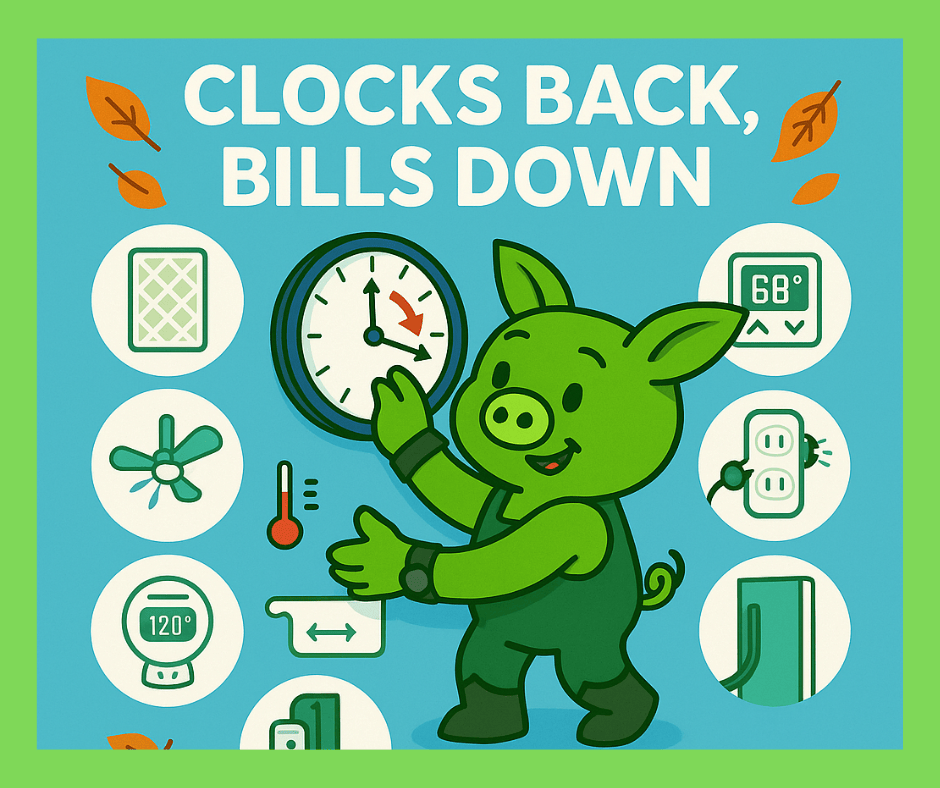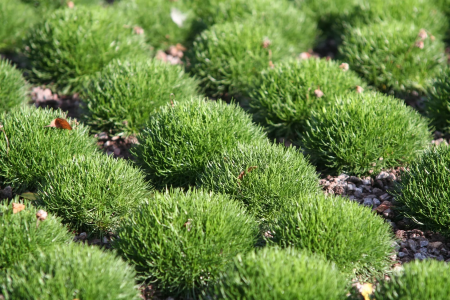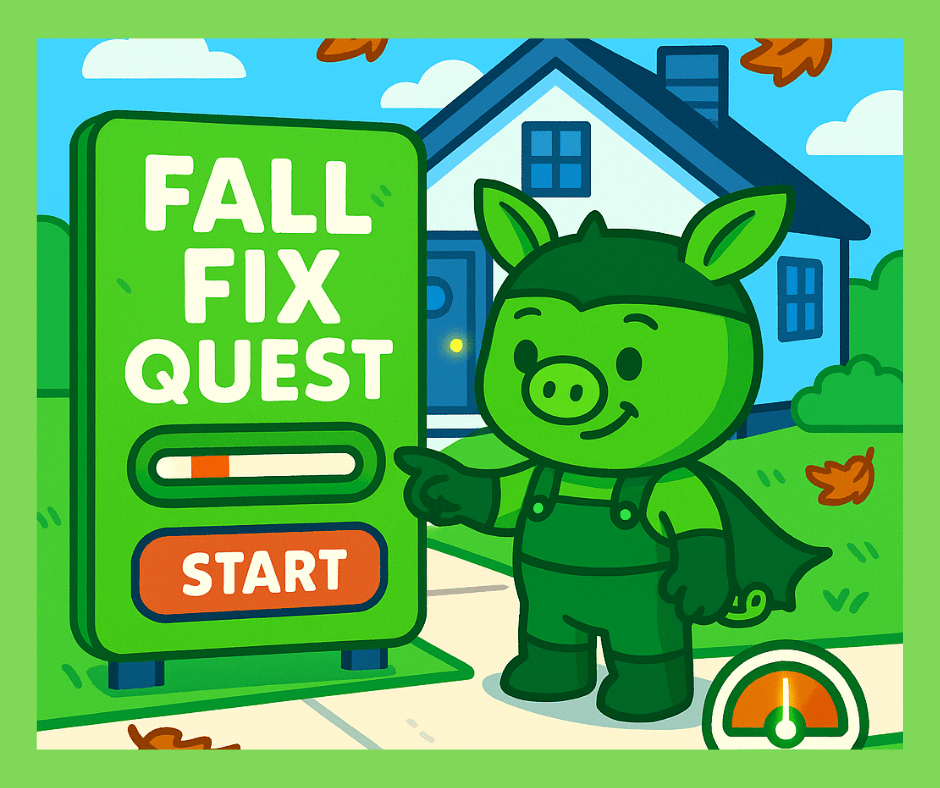
November 3, 2025 | Sustainable Home Tips
The traditional manicured lawn, with its water-intensive upkeep and heavy reliance on chemical treatments, is being reimagined in favor of more sustainable alternatives. As environmental consciousness grows, homeowners are trading in their conventional grass lawns for eco-friendly options that reduce resource consumption while enhancing biodiversity and aesthetics. Here are six sustainable lawn alternatives that can transform your outdoor space into a functional and beautiful eco-oasis.

Why Choose Native Plants?
Native plant lawns are tailored to your region’s climate, making them low-maintenance and highly sustainable. These lawns include a mix of local wildflowers, native grasses, and hardy perennials that thrive without the need for excessive watering, fertilizing, or pesticide use.
How to Get Started
Platforms like My Home Park offer resources to help you identify native plants for your area, even providing mockups for your space. By embracing native plants, you’re also adding seasonal color and texture to your landscape that grass simply can’t match.
Why Moss?
For shady, damp areas where grass struggles to grow, moss offers a stunning alternative. Moss requires minimal maintenance, thrives in low light, and adds a velvety, lush green texture to your yard.
Pro Tip
Moss gardens thrive in shaded corners or areas with compacted soil. Consider incorporating rocks and stepping stones for added visual appeal. If you’re new to moss gardening, Fine Gardening offers excellent guides to help you get started.
What is Xeriscaping?
Xeriscaping is a landscaping method that prioritizes drought-tolerant plants and water conservation. Originally designed for arid climates, xeriscaping has gained popularity across all regions due to its eco-friendly design and striking aesthetic.
How to Start
Check out resources like the EPA WaterSense Program for tips on water-efficient landscaping. Xeriscaping not only minimizes irrigation needs but also creates a modern, low-maintenance yard that stands out from traditional lawns.
Why Consider Artificial Turf?
Modern artificial turf is designed to mimic the look and feel of natural grass while eliminating many of the maintenance challenges associated with traditional lawns.
Sustainability Tips
While artificial turf isn’t entirely eco-friendly due to its manufacturing process, choosing USDA-certified brands ensures that the materials used are renewable and safe for the environment. Look for options that avoid chemical leakage and offer recyclable components.
What Are Ground Covers?
Ground covers are a versatile and eco-friendly alternative to grass. Popular options include clover, creeping thyme, and creeping Jenny, which form dense, low-growing mats that require minimal care.
Popular Choices
Ground covers are especially useful for sloped areas or spots where grass struggles to thrive. For detailed planting guides, visit The Spruce.
What Is a Sharing Garden?
A sharing garden focuses on growing specific crops in individual yards while fostering a neighborhood exchange of produce. Unlike community gardens, each yard specializes in particular crops, and neighbors trade harvests throughout the year.
How to Organize
Collaborate with your neighbors to create a seasonal crop plan. Apps like Nextdoor or Pigybak can help you coordinate and communicate with nearby participants for seamless produce swaps.
The shift away from traditional grass lawns isn’t just about aesthetics—it’s about sustainability, resource conservation, and creating a positive environmental impact. Conventional lawns:
Pigybak is committed to helping homeowners adopt sustainable practices in their yards and beyond. Here’s how we make eco-friendly lawn transformations easier:
Download Pigybak today to take the first step toward a greener, more sustainable outdoor space.
As we strive for more sustainable lifestyles, reimagining our lawns is an excellent place to start. By choosing alternatives like native plant lawns, moss gardens, xeriscaping, artificial turf, ground covers, or sharing gardens, you can reduce your environmental footprint while creating a unique and functional outdoor space.
This isn’t just about cutting down on water use or maintenance—it’s about fostering biodiversity, supporting local ecosystems, and building a more sustainable future. So, take the plunge, explore these alternatives, and transform your lawn into a vibrant eco-friendly oasis.
Ready to start your sustainable lawn journey? Visit our blog for more green living tips, and download Pigybak to find local professionals who can bring your vision to life.
I, [Customer Name], hereby authorize Pigybak to include my name, phone number, and address in their database. I also opt-in to receive notifications about upcoming services in my area. I validate that the information provided is accurate and represents my personal information, not others.
By providing this authorization, I understand and agree to the following terms:
I authorize Pigybak to set up a profile on my behalf, which may include my name, phone number, and address.
I consent to receiving notifications from Pigybak about upcoming services in my area via text message.
I acknowledge that I have the option to opt out of receiving notifications at any time. I can do so by directly contacting the contractor or managing my preferences in the Pigybak app.
I authorize Pigybak to share my contact information with the contracted service providers for the purpose of facilitating service delivery.
Pigybak agrees not to share my information with third parties without obtaining separate authorization from me.
I understand that Pigybak may update the terms and conditions, and I agree to review them periodically for any changes.
I acknowledge that the standard terms and conditions of the Pigybak mobile application, which can be found at www.pigybak.com/privacy-policy, apply to this authorization.
I acknowledge that this authorization is voluntary, and I have read and understood the terms outlined above. By providing my information, I consent to the terms above.

